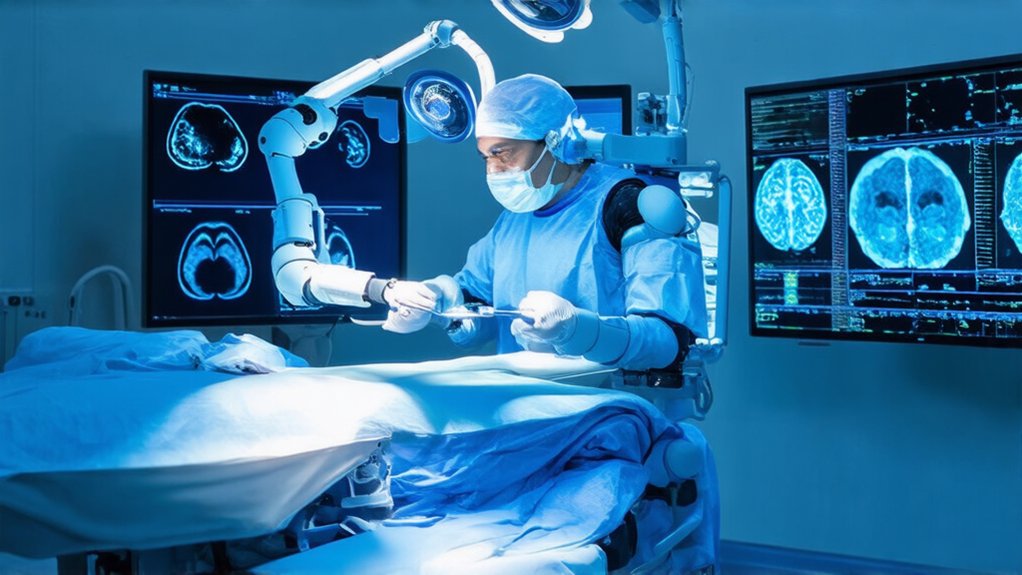Korea is charging ahead with advanced AI surgery robots, pouring billions into innovations that could revolutionize operating rooms. The Korean government is throwing massive funds at this through the Korean Advanced Research Projects Agency for Health (ARPA-H). They’re tackling a real mess: a shortage of surgery staff that’s leaving doctors overwhelmed. These AI-powered robots, designed to handle repetitive tasks, might just save the day—or at least free up human hands. It’s ironic, really; while humans fumble with fatigue, these machines stay steady, no coffee breaks needed. In line with this, Yonsei University Health System is expanding its medical robot training to include AI devices.
But let’s get to the guts of it. Robots like Kymero boast pinpoint precision for brain surgeries, using optical sensors for real-time tracking. Who knew a machine could navigate better than a GPS in traffic? They pull in CT and MRI images, plotting every move to avoid nerves and arteries—talk about dodging disasters. Efficiency? Oh, it’s there; surgeries wrap up faster, cutting complications like a hot knife through butter. Surgeons might roll their eyes, but hey, who wouldn’t want a robot that’s less error-prone than us mere mortals?
Robots like Kymero crush brain surgeries with pinpoint precision, dodging nerves like a pro GPS—faster, safer, and far less error-prone than us humans!
Now, applications are popping up everywhere. In urologic surgery, Korea’s leading the charge, with AI robots handling intricate procedures. Neurosurgery? Kymero’s tackling Parkinson’s like a pro. Even general surgery gets a boost, automating the boring stuff while personalized plans, based on patient data, make care feel tailor-made. This advancement is evident in real-world implementations, such as the Hugo RAS system already deployed at Seoul National University Hospital for operations on prostate and pancreatic cancer patients. Yonsei University’s training center? It’s churning out experts, because let’s face it, you can’t just wing this tech.
Globally, Korea’s eyeing big moves. Koh Young plans to hit the US with Kymero by 2025, chasing FDA approval amid a market set to explode. North America could snag 62% of the pie, doubling in size. Competition’s fierce, driving more innovation—sarcastic types might say it’s a robot arms race.
Economically, Korea’s investing 1.2 trillion won through 2032 to fix staffing woes and spark growth. Exports could boom, turning high-tech robots into a cash cow. It’s bold, emotional even; imagine saving lives while boosting the economy. But will it all pan out? Time will tell, though the potential’s exciting—and a little terrifying. (Word count: 376)




